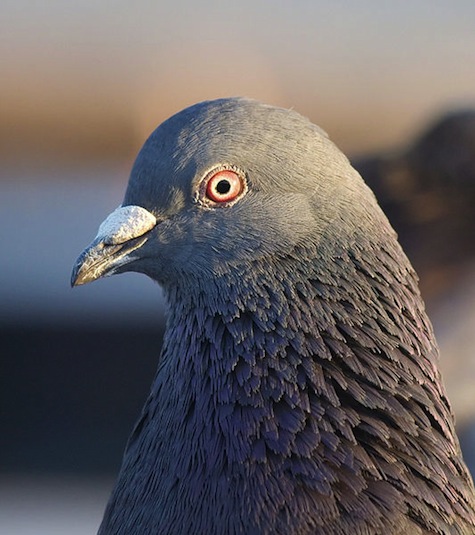 Evolution
Evolution
Darwin Vindicated at Last: Pigeons Evolved from Pigeons

Under the headline “Pigeon DNA proves Darwin right,” Nature reports on a study led by University of Utah biologist Michael Shapiro, that offers “insight into the genetics of both ‘fancy’ domestic breeds and plain street pigeons and supports their common origin from the wild rock dove (Columba livia).”
The Utah team, along with Jun Wang and colleagues at BGI-Shenzhen in China and scientists at the University of Copenhagen in Denmark, sequenced a complete “reference” genome from a breed called the Danish tumbler. The researchers also sequenced the genomes of 36 different fancy breeds and of two feral birds from different regions of the U.S.
The study fills in knowledge about the relationships between breeds, many of which are centuries old with origins in the Middle East. Darwin argued that all domestic pigeon breeds descended from the wild rock dove. Shapiro says this study puts data behind that argument, as all the breeds sequenced are more similar genetically to one another than to another, closely related, species of pigeon, C. rupestris. It also found that street pigeons are genetically similar to racing homing pigeons, which frequently escape into the wild.
Someone should compile a list of articles in science magazines that contain the phrase “proves Darwin right.” It would be rather a long list and would repay study.
The Nature article informs us that the “wild rock dove” is ancestral to many varieties of pigeons today. A little checking reveals that the rock dove was called a rock pigeon until a few years ago, when the Brits changed the nomenclature. The rock pigeon is also known as a common or garden “pigeon.”
So the claim here is that pigeons are descended from a pigeon. Darwin seems to have noticed that rock pigeons lack the ruffs and other fancy adornments of more carefully bred pigeons. He also saw that it was safe to say that a critter that LACKS a trait or a whole bunch of traits is ancestral to those that possess it (or them).
The most famous such claim (in which ancestors are identified) is that invertebrates are ancestral to vertebrates. We can also say that cats evolved from non-cats, dogs evolved from non-dogs, and so on. A million such claims can be made, and they are all equally vacuous. They are disguised assertions that evolution happened.
Meanwhile, the idea that groups of organisms cannot be defined by the absence of characters was first articulated by the German taxonomist Willi Hennig in the 1950s. He launched a new school of systematics known as cladistics, which later took root in the American Museum of Natural History. There, the ichthyologist Gary Nelson was the dominant figure.
Cladistics was later extensively discussed by philosopher of science David L. Hull in his 1988 book Science as a Process.
The cause of cladistics was also taken up by Colin Patterson, a senior paleontologist at the Natural History Museum in London. Patterson said that ALL the presumed ancestral group of evolutionary biology are defined by the absence of characters (“invertebrates” being the best known example; “reptiles” another). Cladists argued that, since the time of Aristotle, it has been well understood that you cannot sensibly define groups by specifying what they LACK. Patterson also famously said in the early 1980s that he didn’t know of any reliable facts about evolution.
In the case of pigeon-to-pigeon micro-changes, however, it is indeed easy to believe that evolution really did happen, and within a few pigeon generations.
Image: Wikipedia.

